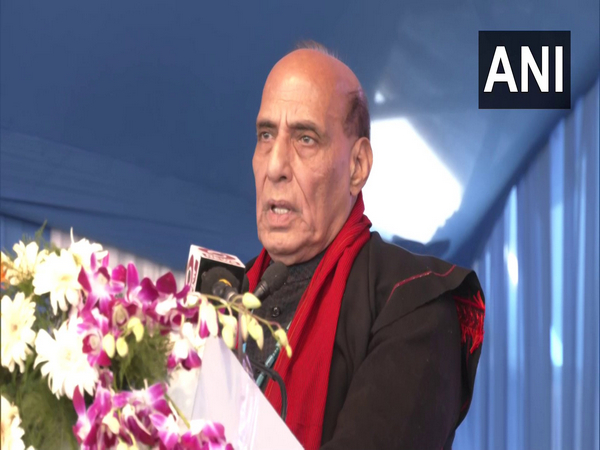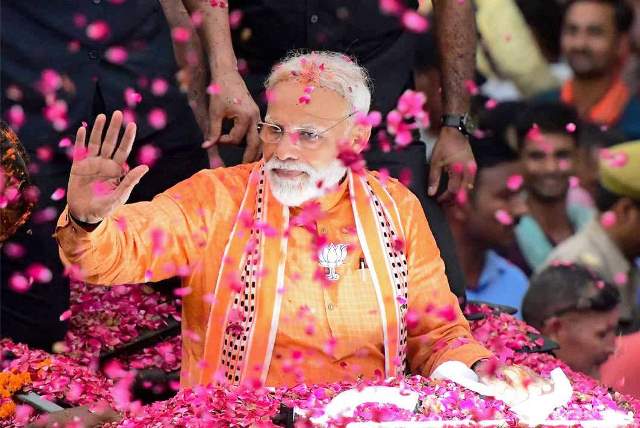Things are really not working as per the pre-determined script the two-man leadership of the BJP had master-minded, along with the RSS, on how to ride the jolly good ride once again to absolute victory in the coming 2024 Lok Sabha polls. From ‘Modi hai to mumkin hain’, the slogan in 2019, to ‘Abki baar, 400 paar’, seems to have got stuck in a filthy quagmire – and they can’t even blame the opposition for it. Indeed, it only reminds a shocked nation, especially seasoned journalists who understand the ‘system’, that, even then, an absolute majority seemed ‘namumkin’ for Modi – that is, until Pulwama happened!
The tragic, sudden and shocking death of 40 CRPF soldiers travelling in a convoy on February 14, 2019, on the Srinagar-Jammu highway, in a village near Pulwama, is still simmering deep inside the conscience and consciousness of India. The tears in the eyes of the family members have still not dried.
The attack happened moments after 3 pm in the afternoon. Anyway, there are too many uncanny and unresolved questions about the attack and how such a huge quantity of explosives was being carried in a vehicle by a lone man in an extremely high security and volatile area, and that too in what is perceived to be a ‘conflict zone’. Those questions can only be resolved after a ‘fair and free’ enquiry, which is simply inconceivable in the current circumstances.
The revelations by former Kashmir governor, Satyapal Malik, however, has been terribly disturbing, and his version has been quoted widely in the media. In all probability, his version might be correct, though a proper enquiry alone can only substantiate the final sequence of events, and the instructions allegedly given to him by the PM himself after hearing the news.
Well, during the attack, or before it, the PM was in yet another ‘PR mode’, shooting for an adventure series called ‘Man vs Wild’, dressed in safari jungle jacket, at the Jim Corbett National Park.
Since then, much turbulent waters have flowed down the bridge. Come to think of it, the BJP, riding high on its well-oiled, cash-rich electoral machine, backed by an organized RSS cadre with deep pockets, and, largely, a stooge media, is in a worse situation now then what it was in — before the Pulwama tragedy. The Ram Mandir ‘Pran Pratishtha’ hyperbole, as a deliberate Hindutva card, with blanket media coverage day in, day out, seems to have vanished into the blue, and even the saffron flags atop homes and vehicles have all but disappeared. The brazen push to make the secular Indian State turn into a quasi-Hindutva apparatus, with the PM leading the rituals in Ayodhya, apart from temple-hopping across the country, seems to have found a sudden road-block.
Indeed, he was last seen in the sea-waters somewhere on the coast of Gujarat, scuba-diving perhaps, praying to the mythical watery city of Krishna, wearing, as trolls claimed, a space-helmet – “so that his face is visible, while praying, underwater”. That is, yet another glorious adventure-spectacle, mixed with a heavy dose of religion, plus, a spectacular photo shoot.
The only other leader known to do such grand, narcissistic ‘spectacles’, often oozing with bare-bodied machismo, is Russian dictator Vladimir Putin, perhaps on steroids; he has predictably won a landslide for the umpteenth time recently, with no opposition party pitched against him in a one-man show, while his most formidable opponent and famous dissenter, Alexei Navalny, just about 47, seems to have been murdered in cold-blood, in a cold prison, somewhere in the icy wilderness far away from Moscow.
Thankfully, India still seems to be a quasi-democracy, with a firm belief in the secular Constitution drafted by Dr BR Ambedkar, culturally pluralist in its deepest essence, still clutching onto the sacred doctrines of freedom and equality in its heart and soul. The second Bharat Jodo Yatra by Rahul Gandhi has been a stupendous success, the India bloc has stitched-up a strategic alliance, the South, Bengal and Punjab are refusing to accept the BJP or Hindutva, and the Supreme Court has finally delivered a great, historic order of justice in an overwhelming atmosphere where injustice seems to be the order of the day. Inevitably, this paradigm shift has plunged the fake messiah and his fanatic followers into a quagmire of doom and despair.
The electoral bonds scam has exposed an organized, unimaginably gigantic, shadowy and sinister operation, putting the most efficient and ruthless mafiosi into shame, in what appears to be a multi-million, multi-mega scam, unprecedented in the history of any living democracy in the world. ED raids are thereby directly linked to patronage to sleazy enterprises, lucrative deals and huge donations to the BJP, whereby, sometimes, companies with a pitiable financial corpus are seen to be donating massive sums running into many crores to the party, using these bonds. This has created the speculation that some of them might be camouflaged as ‘proxies’ for big industrialists; or, some big business empires might simply be wanting a quid-pro-quo in terms of yet another multi-million cash-cow project, including, perhaps, stakes in a public sector company, like airports, mining and ports.
Hence, now, the slogan, ‘Na khaunga, na khane doonga’, seems as hollow, and bereft of ethical values, as most slogans coined by the PM.
ALSO READ: The Tunnel To Himalayan Disaster
Remember a man named Wakeel Hasan. He is one of the rat-miners who staked their lives and squeezed inside the rat-hole, the death-trap of the Silkyara tunnel, in November last year and saved the lives of the 41 trapped workers inside for 16 days. This, after the best of national and foreign technology interventions and disaster management applications failed to succeed. It became 24×7 prime-time news.
After the rescue operations, the PM had a ‘live’ chat show with the rat-miners. Later, reportedly, they were not even given alternative jobs or a financial package as reward – and thereby were left to their fate to rot as rat-miners for the rest of the lives. To add salt to their simmering wounds, Wakeel Hasan’s humble home was demolished by the DDA recently in Delhi. Surely, the meaning of gratitude is different for different people!
Besides, in a dark irony, Navayuga Engineering Company Private Limited — the company that built the Silkyara Tunnel in Uttarkashi which collapsed on 12 November, 2023 — had reportedly bought bonds worth Rs 55 crore. Reports claim that they had bought 30 bonds worth Rs 1 crore each on April 18, 2019, shortly before the Lok Sabha Elections in 2019. In mid-2020, the Andhra-based firm was granted the controversial Rishikesh-Karnaprayag rail link project, apart from other projects.
Controversial, because, like the ‘Char Dham’ project of the PM, which has led to massive cutting down of trees, huge soil erosion and the fear of multiple-landslides in the fragile Himalayan ecology of Uttarakhand, the rail-link project was opposed by environmentalists as another recipe for an impending ecological disaster, after the watery sinking of Joshimath. Besides, reportedly, on October 26, 2018, income tax officials had swooped down on its offices, accusing it of violating income tax rules and laundering money.
As the joke goes on and on in social media: ‘Aap chronology samjhiye – please’! Surely, as another cliché does the rounds: ‘Modiji hain, to sab mumkin hain’!
For more details visit us: https://lokmarg.com/










